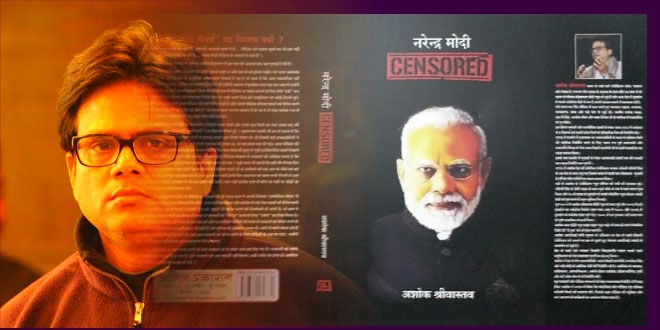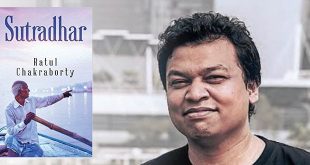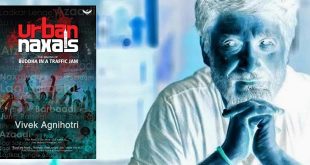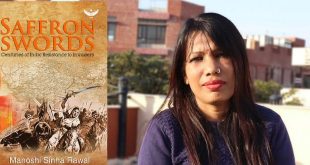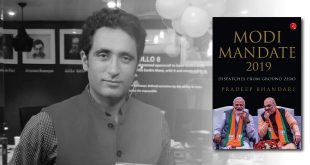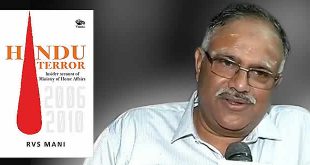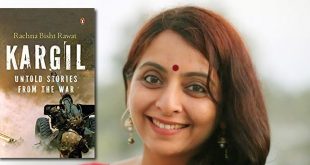Author: Ashok Shrivastav
Publisher: Anil Prakashan
Pages: 208
Price: Rs. 300
Three categories of readers must read this book: Narendra Modi Censored.
- Citizens of the country so that they know the truth about the stories they have been told about Prime Minister Modi
- Journalists working in private news channels who ought to know how things work at DD News
- Those who wish to know why the performance of a private company is normally better than that of a public sector unit
An interview with Rahul Gandhi that never happened and one with the then prime ministerial candidate of the BJP’ that was recorded but met with red tape on DD News: The book Narendra Modi Censored tells the story of the struggle of journalist-anchor Ashok Shrivastav to make the truth prevail in a professional world that harbours malice
As far as chief minister of Gujarat and today’s Prime Minister Modi is concerned, it did not surprise me that the news about him that reached us is laden with bias, replete with lies and based on hearsay. In 2013, when I was engaged in the research work for a book being written on Modi, vivid examples of media messing with the truth played out before me.
As in this book DG of DD News SM Khan pressures Ashok Shrivastav that he must ask questions about the Gujarat riots of 2002 — although the anchor believed that Modi had been acquitted by the courts and his boss insisted more evidence against the Gujarat CM could be gathered — the mention of the riots was necessary also in the book I was researching for. I thought the Wikipedia article would be a good compilation to begin my year-long research (which would culminate months later in the cities, towns and villages of Gujarat).
I was stunned to study the sources of news in the reference section of the Wikipedia article on this subject. The work of less than six odd journalists out of more than a hundred was original. Most journalists had quoted one another! Few visited the spots of crime. From within the confines of one’s home or office, a journalist would file prejudiced reports on assumed complicity of Modi in the riots. Wherever they needed corroboration, they would quote from the six-odd ‘genuine’ reports, where the authenticity was decided by the likes of activist Teesta Setalvad. No interview with Justice Liberhan or members of the SIT, no tour of Godhra to know the truth behind the killing of karsevaks travelling by the Sabarmati Express; no interview with the Muslims of Bharuch who regard Modi highly, no attempt at meeting police officers, no meeting with a victim or an accused!
To what extent Modi is censored in this country can be understood from the fact that even a couple of journalists who wrote his biographies merely regurgitated opinions that were already in the public domain. In our meeting with Modi on December 12, 2013, the then Gujarat chief minister narrated to our team how an author managed a biography. The journalist visited the CMO, accompanied by his wife, and said, “My wife is a big fan of yours.” For the next 15 minutes, his wife talked to Modi while the author himself kept quiet. Then, after returning home, the journalist-turned-author wrote whatever caught his fancy.
There have been worse instances of disgrace for journalism – all for propaganda against Modi. The first incident was where a media house based in the state approached the top BJP leaders, demanding crores worth of an annual advertising contract. When the BJP refused, the campaign to defame Modi started first in that Gujarati language newspaper. And the media houses of Delhi ran the translations of those stories, passing them off as exclusives.
The second incident is related to the first. An interview was published where Modi sounded as though he was justifying the riots. When the BJP leadership questioned Modi, it was found he had not appeared for any such interview. This concocted interview was the first step towards presenting Modi as a monster before the country and the world.
Writer Shrivastav had to deal with such adversities on his way to securing the coveted interview with Modi for DD News during the UPA era. Wherever the TV anchor went with the application for the interview, he got a hostile reception. And when the interview finally happened, the officials of the channel dragged their feet over the broadcast. These officials were primarily Prasar Bharati CEO of the time Jawahar Sarkar and DD News DG Khan.
It is necessary to mention here that the allegations against the then director general and the CEO are believable. When I did a story on the human resources of DD News a few years ago, I found that Khan was furthering the agenda of Anand Sharma and Manish Tewari of the Congress at the respective times when they were the information and broadcasting ministers. Even a candidate of Lalu Prasad Yadav was working in DD News! This was impossible without the consent of the then CEO of Prasar Bharati.
But a question arises here, which free-market advocates often raise: Should the Indian government run a news medium the way the now dismantled Soviet Union ran ITAR-TASS and Pravda? When I cover the Sangeet Natak Akademi, I pose this question to the Ministry of Culture as well. Whereas it is expected of such institutions to be a powerful medium to promote aspects of the living heritage of India namely classical, traditional and folk forms of performing arts, in reality, the Akademi is a doghouse of feuding bureaucrats.
At the political level, ‘When I am the government, the people manning the institutions will be mine; when you take over, they will be yours’ — how long will this model of governance continue? It is a cruel joke on journalism as well as on taxpayers’ right to information. A joke that is played out on the students of history in the country too. As and when the Congress forms government, Aurangzeb turns a ‘Sufi’ and Tipu Sultan becomes ‘secular’!
Where people want to work in government offices, there is indolence. Say, you propose to DD News that its studios, like the other channels, must have yellow flashlights instead of white — yellow illumination brightens up the look of the channel on the TV screen — the channel has to float a tender, calling for bidders offering the cheapest lights. The owner or a senior official in a private channel may just order it and the bulbs would change. But when the sector is government, any haste may lead to the opposition accusing it of corruption.
Returning to the storyline of Narendra Modi Censored, Srivastav comes across as a dedicated, hardworking, industrious and truthful journalist. The integrity of many authors does not often reflect in the printed letters; there are things they hide. But there are characters in the true stories this book narrates, which Srivastava could have kept under the wraps but he did not. He has named his friends from the world of politics.
The integrity of the journalist-anchor-writer is evident also in the fact that he had tried hard to interview the then Congress vice-president Rahul Gandhi too, but the interview on DD News was, most probably, not in sync with the strategy of that party.
The fundamental differences between ‘Team Modi’ and ‘Team Rahul’ is another perspective the author brings up. On the one hand, the Congress’s strategy fell flat on its face when Rahul Gandhi became an object of ridicule following the interview with Arnab Goswami on Times Now. On the other hand, Gujarat chief minister’s team not only chose the channel that reaches even the villages of the country but also made a recording of the interview so that if the UPA government’s bureaucrats tamper with the footage, they can show the original interview to everyone.
Correspondence with officials, association with colleagues, relationship with office bearers of political parties and tireless effort of the author — the book is rich with these details. It’s a lesson for the young who relate a job in the media to glamour. The people at large must read Narendra Modi Censored so that they know, if the Prime Minister did not address a single press conference in the last five years, there’s a certain kind of characters he was avoiding. Otherwise, the purpose of communication is served. To make his message reach the people, Modi initiated the ‘Mann ki Baat’ radio address to the nation; he inspired social media users countrywide and more.
 Kids Portal For Parents India Kids Network
Kids Portal For Parents India Kids Network
